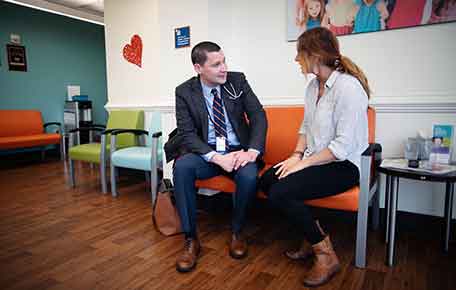You’re looking forward to giving birth. But a prenatal ultrasound shows your baby has a heart defect. Or maybe you’ve just welcomed your new baby into the world. You find out they were born with truncus arteriosus. Either way, you’re trying to figure out where to go next to help them.
At UVA Health Children’s, our congenital heart specialists have the training and expertise to treat even the most complex heart conditions in the tiniest babies. Our survival rates for congenital heart surgeries are consistently at or higher than national averages. You’ll also receive all the support you need from the #1 children’s hospital in Virginia.
Truncus Arteriosus Repair at UVA Health Children's
Normally, babies are born with two main blood vessels leaving the heart. The aorta carries oxygen-rich blood to the body. The pulmonary arteries carry oxygen-poor blood to the lungs.
If your baby has truncus arteriosus, they only have one common blood vessel, or trunk, leaving the heart. They also have a hole in the wall (septum) between their two lower heart chambers (ventricles), called a ventricular septal defect.
When your baby is 2-4 weeks old, we’ll perform surgery to:
- Separate the pulmonary arteries from the trunk (the trunk becomes the first part of the aorta)
- Connect the pulmonary arteries to the right lower heart chamber (ventricle) using a tube (conduit)
- Close the ventricular septal defect with a patch
This stops oxygen-rich and oxygen-poor blood from mixing in your baby’s heart. It also too much blood from going to the lungs, meaning your baby’s heart no longer has to work as hard to pump blood to the body.
Replacing the Conduit
Your child outgrows the conduit or tube connecting their right ventricle and pulmonary arteries as they age. We can perform surgery to replace the tube:
- Around 2-3 years old
- Again in their teenage years
In some cases, we can use a less invasive procedure to relieve obstruction in the conduit without surgery. The doctor places a tube (catheter) into a blood vessel in your child’s leg. They then use the tube to reach your child's heart and stop the obstruction.


